Photo



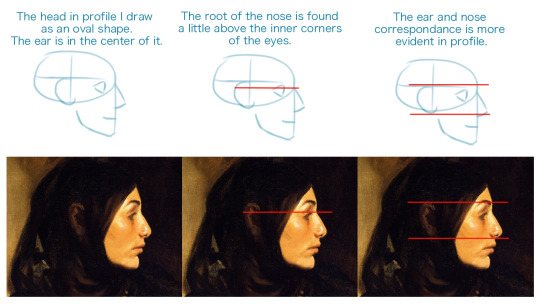

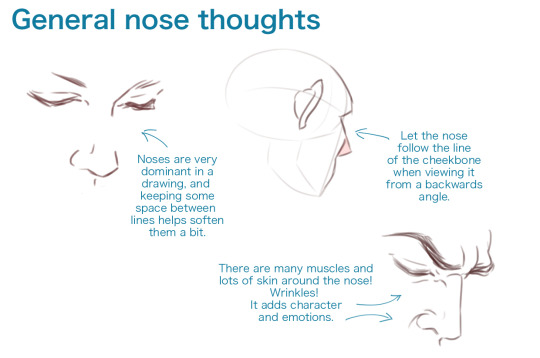

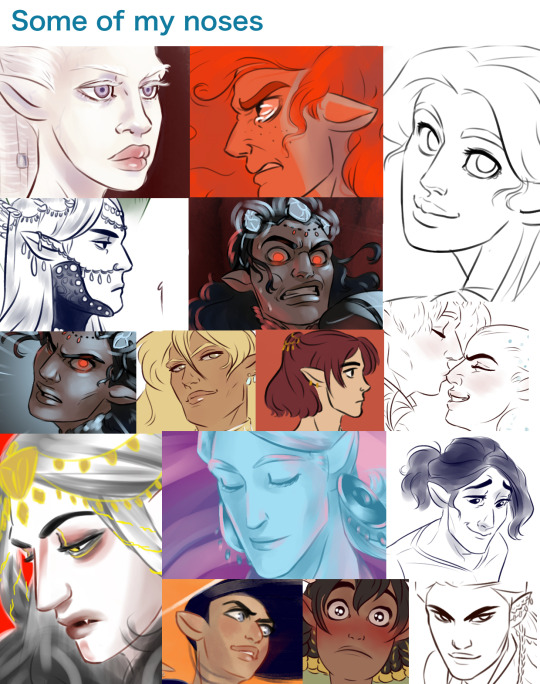
And this is how I nose.
54K notes
·
View notes
Photo



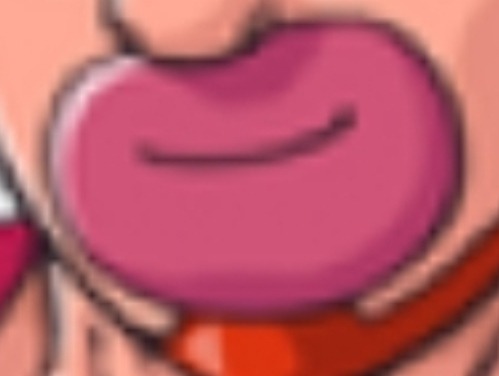

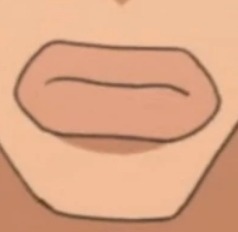



Hey jsyk it’s 2018 and if you’re still drawing characters with big lips like THIS, even if they’re pale/not black, it’s fucking racist. Stop doing it.
No excuses. “It’s a stylistic choice!” It’s a RACIST stylistic choice.
“Idk how else to draw big lips!” That’s because you relied on racist caricatures and are a bad artist. Teach yourself. Learn. If you’re not willing to do that, then you are a bad, racist artist.
“But it’s part of the character design!” Yeah, and it’s racist. If it’s your OC, then change it. If it’s not your OC, make the right choice and draw them with normal looking bigger lips instead of this racist monstrosity.
And if this post makes you uncomfortable because it’s calling you out for stuff you’ve done, good. Fix it. Own up to it. Grow.
If you see this and you’re first thought is to defend this: you are racist. You are part of the problem. Congrats. Now work on yourself and unlearn that.
122K notes
·
View notes
Text
Ways to Deal with Lack of Motivation (writing ver.)
Whether you call it lack of motivation, writer's block, lack of muse, drought of creativity, etc. we all know similar feelings of wanting to write but just not being able to.
This post is a masterlist of what I've done in the past and/or advised people to do in the past when they've come to me, saying they don't know what to do to overcome this mental block.
It will be in plain-text for now, but I do plan to make separate posts about each one, so feel free to reblog to save! You can also comment, reblog, message me, etc. if you would like to be added to a taglist for a specific method's post.
If you have anything you do personally that isn't specifically on this list, you can either reply in the comments, or feel free to reblog!
Now, let's help some of our friends out, shall we!
The list is under the cut.
Most of my masterlist posts are organized alphabetically, but because of the nature of this post, I'm deciding to list things a bit differently.
The sections will be grouped based on what the method calls for (like changes in the doc, changes in device, etc.)
Document-Specific (confirmed to work in Google Docs)
Change up the design!
You can change pretty much anything from the font, the font style, the font size, the font color, the background color, etc. You can add pictures (either using copy and paste or inserting it as a watermark). The possibilities are endless! Heck, you can even write using the columns section if you feel like it.
Formatting it like a book might also help you. Personally, doing this makes me feel really cool.
Also, the comic sans trick (literally just switching the document font to comic sans) might help too.
Make the words invisible!
Change the font color to be the same page as the background color, effectively making it so you cannot see what you write! If you're one to edit while you write (and want to stem that habit) or get too caught up on the tiny things, this might be a helpful method for you!
Use speech to text!
Speech to text is a really useful tool. You can get words down fast without having to worry about every keystroke it takes to write that one word, that one sentence, that one paragraph, etc.
Make a list!
Make a list of your ideas, sensory details, plot points, things you want to write that session, etc. You'll end up with an organized brain dump at the end and will have a much clearer idea of where you might want to go with your writing.
To keep yourself on track, write the scene that corresponds to that idea, sensory detail, plot point, etc. under the bullet point you initially wrote. Gradually do this for every point on the list, and watch your progress!
Additionally, you can also keep a list, either in the comments or a separate document, of irrelevant thoughts (either for that specific project or writing in general). This way, you'll be able to come back to all of your great ideas without having them distract you.
Use placeholders!
These placeholders can be anything from a few words in brackets to a paragraph long summary. Just jot down enough information for Future You to understand what you wanted and enough for Present You to feel like you can move on.
Examples include [insert name], "Character A will EITHER (insert choice) or (insert choice)", and "Character A needs to blank, blank, and blank, which causes blank, blank, and blank to happen."
Device-Specific (confirmed to work on Chromebooks)
Disable your backspace!
Backspace is a key you might find yourself using a lot when you write. If you're the type to edit while you write or get stuck on the small things, but don't want to make your writing invisible, don't let yourself have the luxury of having that backspace key during your writing sessions. Reassign the backspace function to a different key, one you're not tempted to use so often.
Don't switch tabs!
If you're writing on a computer, dedicate that device to writing during your session. Any music or non-writing-related activity can be done with a separate device like your phone.
You can also use something like StayFocusd to limit yourself to which websites you can use during your writing session if you know you're prone to wandering down rabbit holes or gravitate toward YouTube.
Group your tabs!
Grouping your tabs can help you organize your virtual workspace. You can have one group for research and one group for writing, one group for each project, etc.
You can also color code each group!
Assign Desks!
Chromebooks allow you to use up to 8 desks at a time. You can use one for writing, one for irrelevant tabs, etc.
Get off your device!
Put that phone down. Close that laptop. Grab a good old notebook and pen/pencil/writing utensil of your choice. We're going back to the old days where the internet didn't exist, and all you have for company is your own imagination, whether you like it or not. Have fun!
Audio-Specific
Make playlists!
These playlists could be for your characters, your settings, your scenes, your projects, etc. They can help you get into the mood and have fun!
You get bonus points if the playlist won't run out of songs mid-writing session.
If you're writing fanfiction or roleplaying as a certain character, they may be pre-existing playlists that you can use as inspiration for your own.
Lyric to language!
Copy and paste the lyrics to a song you think would fit the mood of the scene, and write snippets in relation to each line. This uses pre-existing media as a prompt for your writing, which can be immensely helpful if you don't know where to start.
If you're writing fanfiction or roleplaying as a certain character, there might be fan songs that exist that you might want to check out!
Surf Authortube!
Authortube is a great resource for writers if you want to improve. You can also put it on in the background. There are some authors who do write-with-me's as well.
Abbie Emmons and Bethany Atazadeh are personal favorites. They have several genre/mood specific music videos to write to, and they're great!
Put on that Instrumental!
If you find that you can't write whilst listening to something with lyrics, go for instrumentals!
Look up band pieces! Celtic Air and Dance, Red Thunder, etc. are all good choices.
Session-Specific
Act it out!
If possible, try to emulate the scene you're trying to write with your activities. Go hiking if your characters are going hiking and take notes on what it's like. Go swimming if you're trying to figure out how to describe that one water temperature. Eat that food if you're trying to figure out how to describe its taste.
Grabbing a buddy or getting a group of friends together to help you could also be very fun!
Set the scene!
If possible, try to emulate the setting you're trying to write with your surroundings. Go into your closet if you're trying to write a character in a small, enclosed space. Crawl under a desk, a table, a chair, etc. Put yourself in your characters' shoes.
Sprint it out!
Set a timer for a certain period of time and write until that timer goes off. Look at how many words you've written. Try to beat that in your next sprint!
Sprinto is a good Discord bot if you use Discord.
If you don't want to look at your word count, and just want to have focused writing sessions, then do that! No one's stopping you. Feel free to do what works for you!
Dump it out!
Brain dumps are extremely helpful with getting all of your ideas and thoughts out, effectively clearing your mind so you can start writing.
I like doing mine on paper, but you can do yours in a document, in your document's comments, in Google Keep, etc.
Take breaks!
Every so often, get up and do something. Reward yourself. Clear your mind. And then get back to it.
I take breaks to stim and tic and do things that I've been meaning to do but haven't done, especially when I'm frustrated with a session not going as I planned.
Write something different!
This might seem a bit counter-productive, but sometimes, you just need a change! It's perfectly fine to make a new document over some new concept you really want to write about and come back to your main project later.
If you want to stay slightly more on-topic, pick a character and ask yourself questions.
Examples include: How would this character do in a grocery store? Write about if they use coupons, if they have a certain route, if they like certain brands, if they only get organic foods, etc.
If you want to explore a setting, pick a leaf or a petal or a piece of paper, something small, and have it blow through the wind. Write about its journey and what it "sees" as it moves through a castle, a forest, etc.
Have fun!
Have fun with your writing. It doesn't have to be a job or a chore or something you absolutely dread doing. Sometimes, you just need to change your perspective.
So write fanfiction of your own WIP!
Roleplay as your OCs!
Write something so bizarre and so outlandish!
Make writing fun again!
Collaboration-Specific
I don't have any methods that you absolutely need friends for. This section is just to let you know that, sometimes, company can help! Getting into a voice channel in Discord, facetiming, etc. with a group of friends can really help boost your morale and help you finish that scene, chapter, etc.
Get into a Writing Discord, a Roleplay Discord, a Fandom Discord, etc. Engage with people on platforms!
Writing doesn't have to be a solitary activity.
-Last Updated: June 23, 2022-
That's about all I have for now!
I hope this helps you if you've been stuck in that awful limbo.
Until next time, friends!
12 notes
·
View notes
Note
I feel stupid for asking this so im using anon, but how do you draw the hijab? Whenever I try it looks like an egg www
also, Ramadan Mubarak! May Allah bless you
Don’t feel stupid for asking! Drawing is hard no matter what you’re drawing, so don’t be afraid to ask for help^^ But honestly even I feel like the best of my hijabis look a little egg-like, and that’s okay!
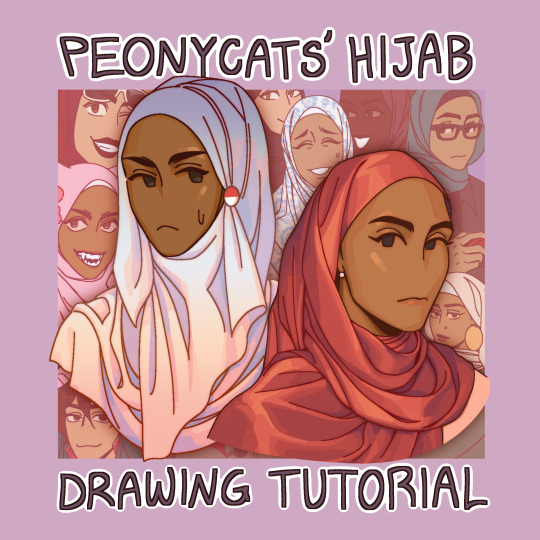
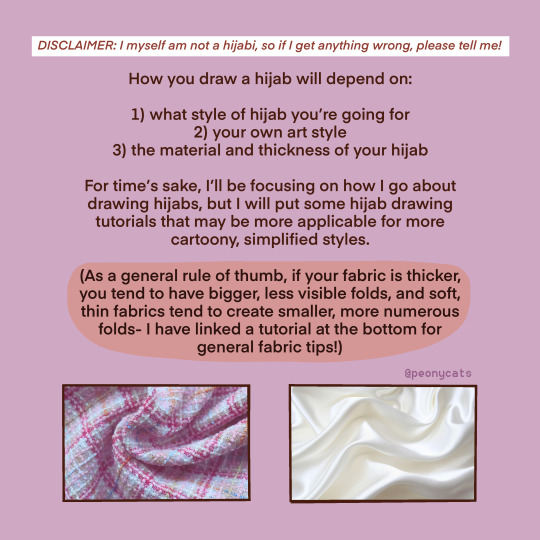
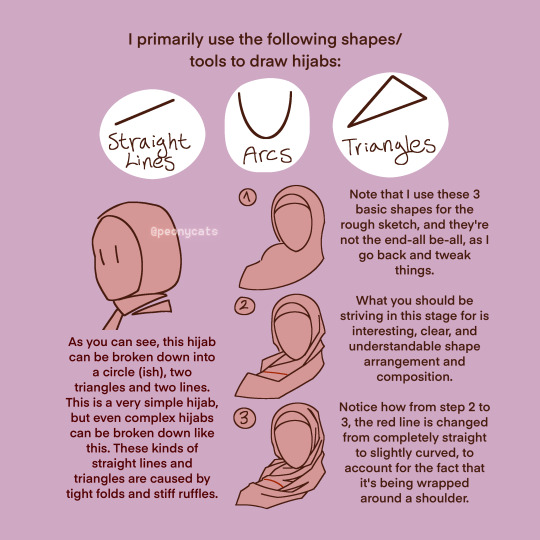

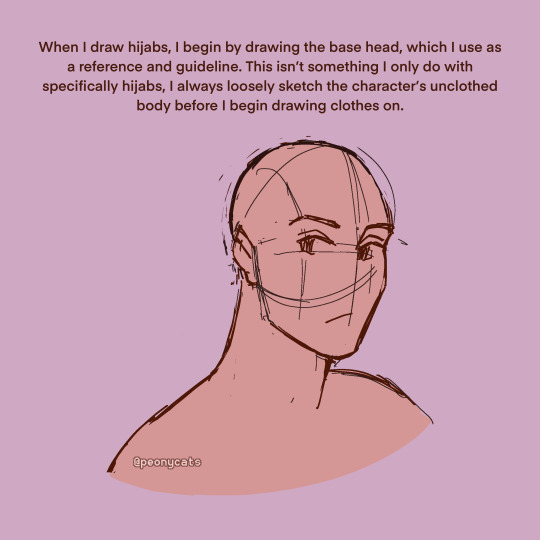
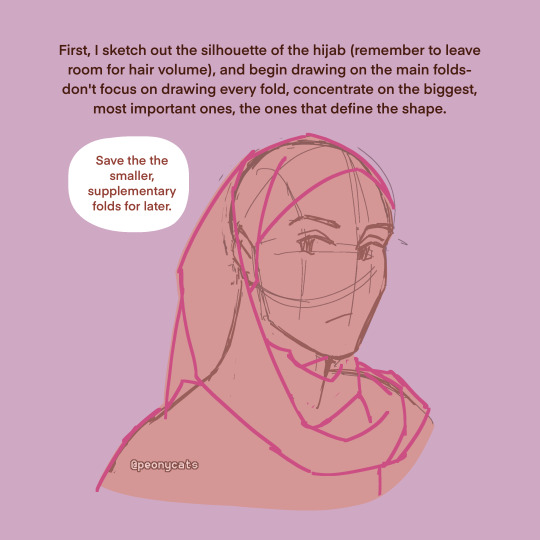

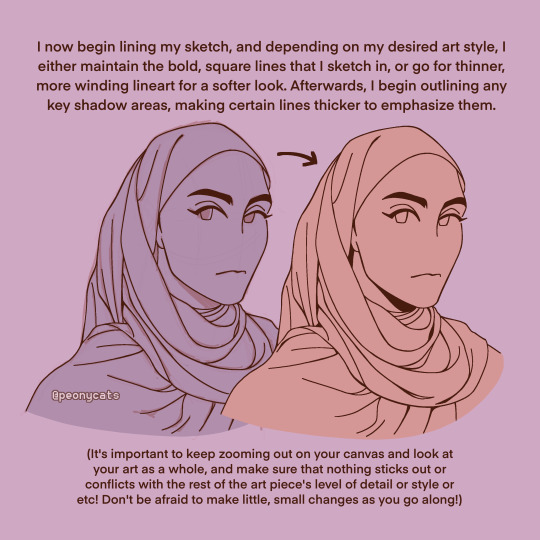
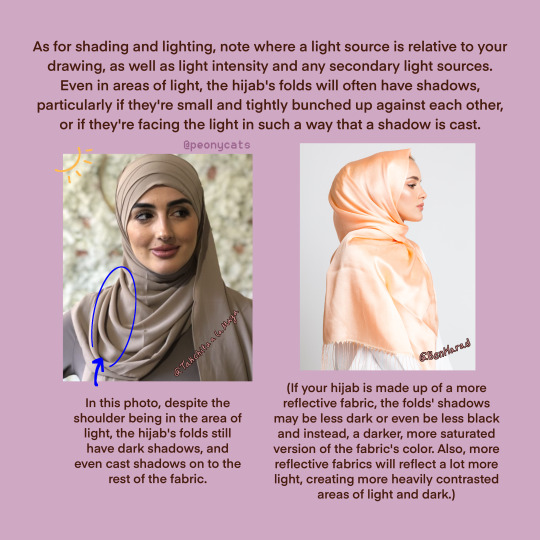
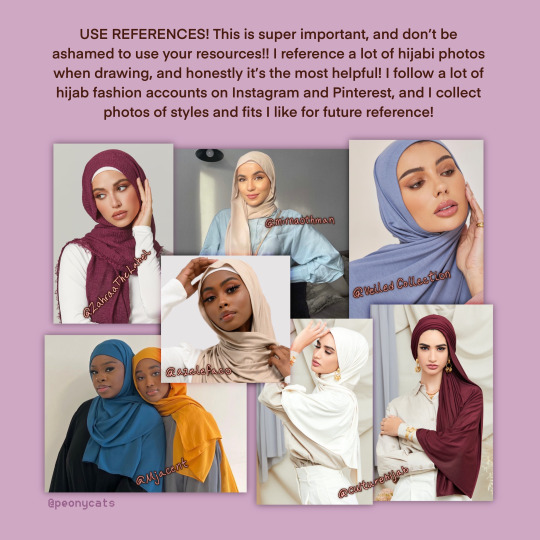

This tutorial is already taking so goddamn long, so I’m just gonna link my coloring and shading tutorial I did a month ago 😭😭

Gosh, I hope what I wrote made sense 😅 But thank you so much for the well wishes! Happy Ramadan (Eid Mubarak at this point WAHHH), and the same to you, may you and your loved ones have many blessings!!
ADDITIONAL REFERENCES
Winchester Meg’s Hijab Drawing Tutorial
Souratgar’s Hijab Drawing Tutorial
General Tips for Drawing and Shading Fabrics
18K notes
·
View notes
Photo



Here’s a little Art Tip about a very specific part of the body. Pop a squat and see how it looks on you.
37K notes
·
View notes
Text
HEY THIS IS IMPORTANT whats your favorite place to find drawing references?
210K notes
·
View notes
Text

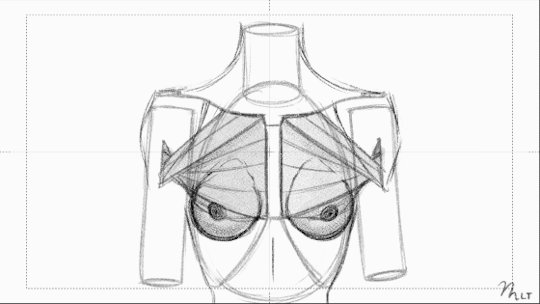

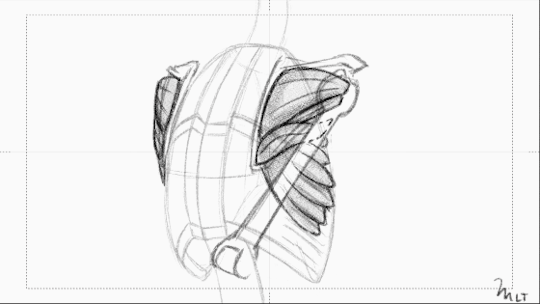
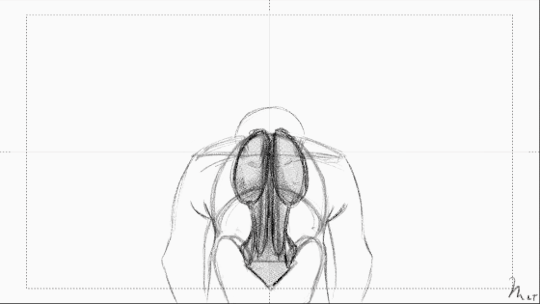



All the torso animated studies.
55K notes
·
View notes
Text
HEY THIS IS IMPORTANT whats your favorite place to find drawing references?
210K notes
·
View notes
Note
Hello! Hope youre having a great day! I absolutely love how you draw clothing and how varied the layers and folds are, where do you usually take refs from? I havent found any good resources to reference from sadly, was wondering if you good help. Cheers!
there are like... two basic things to always keep in mind.
or at least i keep them in mind...
cheat trick: draw the seams!
its basically contour for your clothes. it gives more structure and detail by default. you can do like a simple line, or do like a striped line. or you go the extra mile to do a pattern stich.

Triangles Rule! clothes have a this habit of falling in triangles. like there is a Fix-point that holds the cloth and then it spreads out, usual in a triangular structure. depending how tight it is pulled the triangles get tighter, or wider when the garment is just draped draping over the body. how much into detail you want to do depends on each artist.
fix-points wher most the fold and details happens is usualy where we have our joints. elbow, knees, armpit ect.

my references are more for inspiration as to what the characters are wearing rather then how to draw the fold. though... i struggle lots with hoods but in that case i just google "hoods" and tada! dozen and dozen of references. thick hoods slim hoods. pulled up pulled down.
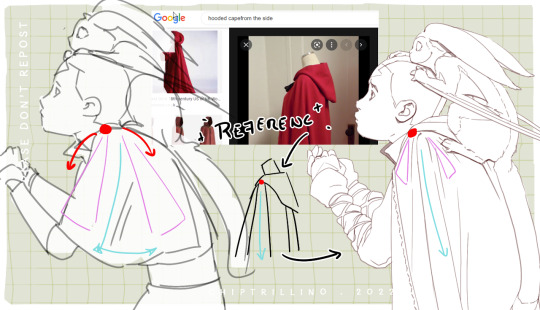
about layering clothing... i do in fact just... layer them? like i have my thumbs of course where its all like mixed toghether in one. but if i feel like it i take the time to go through each layer and to figure out how the clothing interact. or like... i can like this see the clothes underneath more clearly in case i need them? ha i make my own dress up dolls somehow hahah hm...

which is fun to me. because lets say it it suddenly hot or getting cold the character has some variation? uhm... i have more doodeled out. this are just few i have finished and... urgh one day i will continue figuring these guys out...
anyway this was a lot. uhm... thanks for reading this far?
hope this helped
6K notes
·
View notes
Link
Free website that lets you design characters with customizable species, head, body (including extra/different limbs), clothing, gear, stage, and pose. Great for building OC’s, modeling poses, or developing fantasy worlds.
1 note
·
View note
Photo

Suspense, Horror and Mystery Genre Differences Infographic
27K notes
·
View notes
Text
Writing existing character voices for fanfic
Hey, so, I started doing a writeup a week ago about how to get character voices in your fanfic to sound “in character,” in response to a comment from a new writer I was beta-ing for.
I’ve been told this is a thing I do well.
As someone who studied dialogue extensively for a theatre degree, I tend to do this reflexively now, and I don’t write out each individual step. But I put some thought into how I might break down the process if I was new at it and looking to get better.
I don’t think it’s actually that different than an actor studying character accents, except as a writer you’re breaking down meaning rather than sound.
Let’s take a look at what makes dialogue unique to a character. I’m gonna list these as bullet points first, and then I’ll suggest some exercises to explore these aspects of speech.
Most important aspects - focus on these first
Vocabulary - the words they use. As subset of this:
Complexity of words, which can include:
Syllable length
Likelihood to be used in casual conversation - a character can be very smart and still use very informal language.
Cultural touchpoints
Culture can include pop culture references - think Tony Stark’s nicknames for everyone, i.e. “Point Break” and “Underoos”
How in or out of sync the character is with the story’s setting with regard to both time and place - are they from a different country or era of time than their peers?
Important - Check these out if you have time
How likely the character is to speak their mind vs. change the subject - this could be for any number of reasons, from fear to duplicity
Amount they say / Introvertedness / how reticent they are - This is somewhat related to the above point, but not necessarily, and should be researched from different angles. Subverting a topic is not the same thing as being afraid to talk about it.
Different ways of speaking with different characters - this could be a function of story (i.e. how a character who is captured speaks to their captors as opposed to friends) as well as pure Code Switching
Deep cuts - Advanced aspects of speech
Fluency in the language they are speaking
Accents - You do not have to write a character in an accent, i.e. spell the words differently to show the accent, if you don’t want to. It really depends on the piece (usually how light hearted or humorous you want it to be) whether you do or not.
Okay, this is all well and good, you say. But HOW do I incorporate this into my writing?
Dialogue analysis exercise
Find five (or more, but at least five) representative lines from your character’s canon dialogue.
If they don’t speak, don’t have five lines, do the best you can. (I imagine other forms of communications can probably also be analyzed in this way, but I’m gonna focus on dialogue for now.)
These are going to be your key phrases. They need to be from canon and they need to be words that really show off who your character is.
Say the words out loud. Read them again and again. What do they sound / feel like?
What is the average syllable length? How many long words do they use?
Do any words jump out at you as archaic? What about modern pop culture references?
What is a different way they could have said this? Write some alternate versions of this phrase and figure out WHY the character didn’t say it this way instead. What is the difference between the canon dialogue and the alternative? Try to be as specific as possible. It’s as important to know what they wouldn’t say as what they would.
Look up any of the more complex words and find some similar ones, with a similar level of complexity. Use a thesaurus you trust and possibly also Wordnik. If your character doesn’t use ANY complex words, reflect on that. Why? What’s their reason? How does that fit with the rest of their personality?
Think of some other characters from other pop culture pieces who speak in a similar way. It doesn’t have to be 100% the same, but if it can help your ear get used to some new-but-different phrases, it’s enough. You’re training your brain to speak like the character. Start to sort phrases they would say from ones they wouldn’t. How do these two characters differ?
Now that you have worked thoroughly through your key phrases, start to imagine these lines said in something other than the original context. What if they were said to a different character? WOULD they even be said? What would change? What would happen if your character was scared / hurt / overjoyed / sick?
Finally, after all that, write some NEW dialogue for your character, either as practice, or right into your fic draft. Keep using your key phrases as a guide and go back to canon as much as you need to! You can do this!
After all of this, you should feel significantly more confident in writing that existing character into your story. Huzzah!
If you found this at all helpful, reblog and / or leave me a note. I’m curious to hear what you think.
3K notes
·
View notes
Text
Whgskl. Okay.
PSA to all you fantasy writers because I have just had a truly frustrating twenty minutes talking to someone about this: it’s okay to put mobility aids in your novel and have them just be ordinary.
Like. Super okay.
I don’t give a shit if it’s high fantasy, low fantasy or somewhere between the lovechild of Tolkein meets My Immortal. It’s okay to use mobility devices in your narrative. It’s okay to use the word “wheelchair”. You don’t have to remake the fucking wheel. It’s already been done for you.
And no, it doesn’t detract from the “realism” of your fictional universe in which you get to set the standard for realism. Please don’t try to use that as a reason for not using these things.
There is no reason to lock the disabled people in your narrative into towers because “that’s the way it was”, least of all in your novel about dragons and mermaids and other made up creatures. There is no historical realism here. You are in charge. You get to decide what that means.
Also:

“Depiction of Chinese philosopher Confucius in a wheelchair, dating to ca. 1680. The artist may have been thinking of methods of transport common in his own day.”
“The earliest records of wheeled furniture are an inscription found on a stone slate in China and a child’s bed depicted in a frieze on a Greek vase, both dating between the 6th and 5th century BCE.[2][3][4][5]The first records of wheeled seats being used for transporting disabled people date to three centuries later in China; the Chinese used early wheelbarrows to move people as well as heavy objects. A distinction between the two functions was not made for another several hundred years, around 525 CE, when images of wheeled chairs made specifically to carry people begin to occur in Chinese art.[5]”
“In 1655, Stephan Farffler, a 22 year old paraplegic watchmaker, built the world’s first self-propelling chair on a three-wheel chassis using a system of cranks and cogwheels.[6][3] However, the device had an appearance of a hand bike more than a wheelchair since the design included hand cranks mounted at the front wheel.[2]
The invalid carriage or Bath chair brought the technology into more common use from around 1760.[7]
In 1887, wheelchairs (“rolling chairs”) were introduced to Atlantic City so invalid tourists could rent them to enjoy the Boardwalk. Soon, many healthy tourists also rented the decorated “rolling chairs” and servants to push them as a show of decadence and treatment they could never experience at home.[8]
In 1933 Harry C. Jennings, Sr. and his disabled friend Herbert Everest, both mechanical engineers, invented the first lightweight, steel, folding, portable wheelchair.[9] Everest had previously broken his back in a mining accident. Everest and Jennings saw the business potential of the invention and went on to become the first mass-market manufacturers of wheelchairs. Their “X-brace” design is still in common use, albeit with updated materials and other improvements. The X-brace idea came to Harry from the men’s folding “camp chairs / stools”, rotated 90 degrees, that Harry and Herbert used in the outdoors and at the mines.[citation needed]
“But Joy, how do I describe this contraption in a fantasy setting that wont make it seem out of place?”
“It was a chair on wheels, which Prince FancyPants McElferson propelled forwards using his arms to direct the motion of the chair.”
“It was a chair on wheels, which Prince EvenFancierPants McElferson used to get about, pushed along by one of his companions or one of his many attending servants.”
“But it’s a high realm magical fantas—”
“It was a floating chair, the hum of magical energy keeping it off the ground casting a faint glow against the cobblestones as {CHARACTER} guided it round with expert ease, gliding back and forth.”
“But it’s a stempunk nov—”
“Unlike other wheelchairs he’d seen before, this one appeared to be self propelling, powered by the gasket of steam at the back, and directed by the use of a rudder like toggle in the front.”
Give. Disabled. Characters. In. Fantasy. Novels. Mobility. Aids.
If you can spend 60 pages telling me the history of your world in innate detail down to the formation of how magical rocks were formed, you can god damn write three lines in passing about a wheelchair.
Signed, your editor who doesn’t have time for this ableist fantasy realm shit.
60K notes
·
View notes
Photo


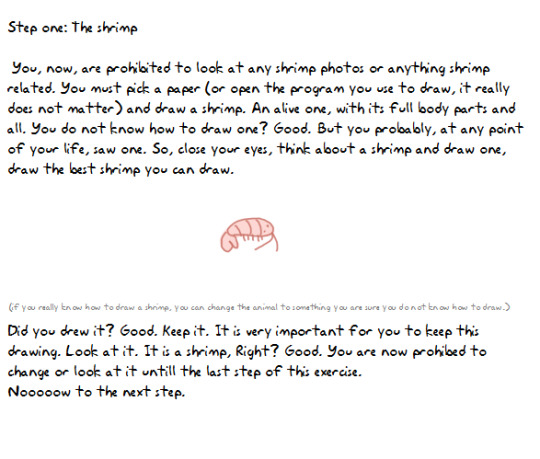


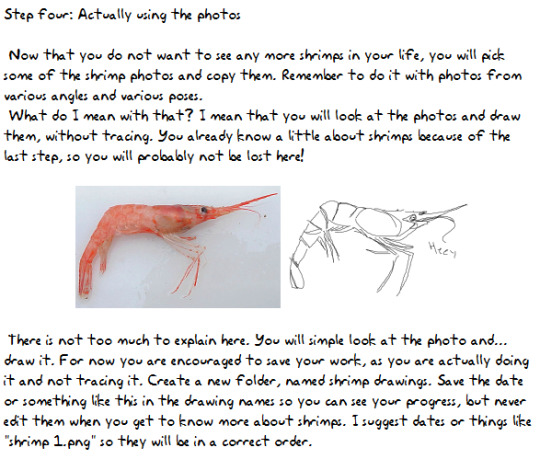


How I pratice drawing things, now in a tutorial form.
The shrimp photo I used is here
Show me your shrimps if you do this uvu
PS: lots of engrish because foreign
307K notes
·
View notes
Text
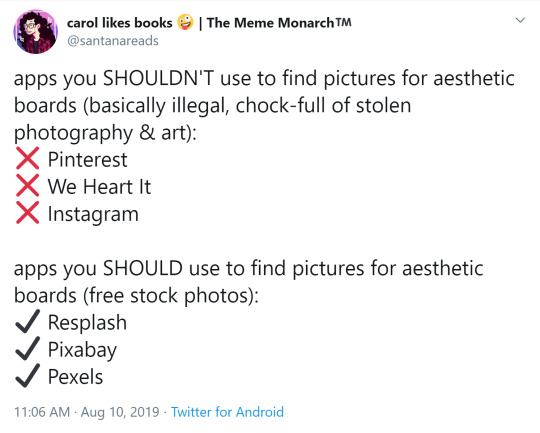
(source)
Unsplash - photography, illustration, and art
Pixabay - same as unsplash
Pexels - stock photos and videos
Stockvault.net - stock photos
freepngimg - icons, pictures and clipart
Veceezy - vectors and clipart
Kissclipart and kissPNG - more vectors and clipart (often transparent!)
Getdrawings - simplistic images and drawing tutorials
Gumroad - photoshop brushes (and more)
Canva - needs login but has lots of templates
Library of Congress - historical posters and photos
NASA - you guessed it
Creative Commons - all kinds of stuff, homie
Even Adobe has some free images
There are so many ways to make moodboards, bookcovers, and icons without infringing copyright! As artists, authors, and other creatives, we need to be especially careful not to use someone else’s work and pass it off as our own.
Please add on if you know any more sites for free images <3
375K notes
·
View notes
Text
a guide to white canes for sighted authors/artists
happy white cane safety day everyone!
most people who don’t use white canes themselves tend to not understand how they work, and so, when portraying blind characters who use them, tend to get it very wrong. so, i thought i’d write up a small informative post about white canes, how they’re designed, and how they’re used.
most of these misconceptions seem to be based around the mistake of thinking a white cane and a cane meant for mobility are more similar than they actually are. which makes sense - most people know at least one person who uses a cane for mobility, while relatively few people interact with the blind. so, because they’re both canes, they must be the same, right? the answer: nope.
purpose
mobility canes are meant to provide additional support for people who, for whatever reason, have difficulty walking without more support.
meanwhile, the main purposes of a white cane are to:
detect obstacles
give the user detailed info about the texture of the ground
detect ledges, steps, and curbs
identify them as blind to the people around them
these things and the things mobility canes are meant to do, beyond the incredibly general “Help user get around”, don’t really overlap at all. so of course, they’re different to suit their different uses.
design
first things first: canes for the blind don’t come in any other colors, they’re always white. thus white cane is synonymous with cane for the blind - it is a color meant to identify the user as a person with a vision disability.
one thing about white canes is, because they are not meant to support weight, they don’t need to be particularly strong. it’s not like you could easily grab one and break it, of course, but they simply do not need to be the same kind of solid and sturdy that a mobility cane is.
strength isn’t a priority here. thus, their design is based around convenience instead.
white canes are hollow, making them more lightweight. also, most of them fold up so it’s easier to hold them while sitting down. if i’m on the train or the bus, i typically fold down the top section, and when i’m in class, i fold it up, pull the loop over to hold it together, and keep it by my feet.
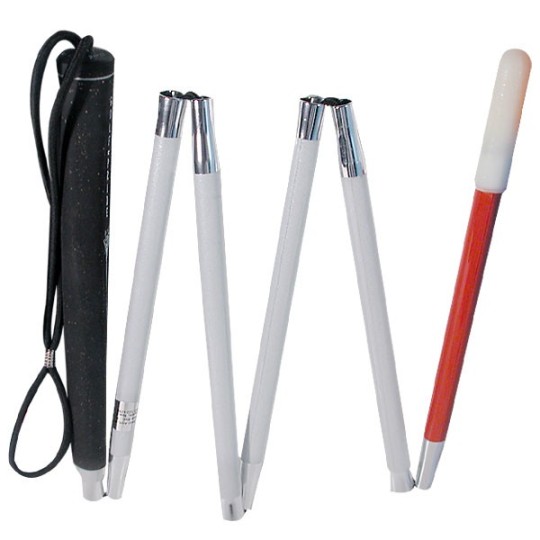
[image: a white cane partially folded]
another thing about white canes is that they’re long. generally, they’re meant to reach to around a little bit under your shoulder. for example, im 5'3"/160cm tall, and my cane is 4'5"/132cm long. that’s a huge portion of my height!

[image: a person holding a white cane in an inactive position, while to their left is a person walking white holding a white cane.]
looooooooong
one more thing! tips.
white canes have removable tips, and this is pretty important for several reasons.
the tip of a cane will get VERY dirty. personally, when i get home, i remove the tip before i use my cane indoors; this helps keep dirty and water off my floor!
and because white canes are used by either dragging or tapping them across the ground, the tip wears down. tips can be bought separately, meaning you don’t need to replace your cane entirely every time it’s worn down too much.
and that opens up some possibility for different tips!

[image: white cane tips, from left to right: a standard tip, a teardrop tip, a metal tip, and a roller tip.]
standard tips are the ordinary kind, and come with the cane.
teardrop/marshmallow tips (different names for the same thing) are fatter. the thing is, white canes dragging across the ground will get caught in a LOT of things. listen. when my cane gets stuck in a crack in the sidewalk, the inevitable thing is that it gets jammed into my thigh and a giant bruise forms. because of their shape, marshmallow/teardrop tips get caught less often.
metal tips are very narrow and made of metal. they’ll make a louder sound when tapped, and they last way longer than nylon tips. using them outside is guaranteed to get caught even more frequently than a standard tip, but they’re quite useful in large indoor areas like a mall or a school.
roller tips are basically like a ball - they roll straight over cracks and stuff, and are the least likely to get caught. they’re also the most expensive type to get.
use
there’s several ways to use a white cane.
these two methods are the most common, and both serve the purpose of letting the user know about obstacles in their path and notifying them of curbs and steps. in both cases, the cane is swiped from 2in/5cm out from their shoulder on one side, to 2in/5cm out from the other:
method 1: tap a point on the ground out from one side and to the other repeatedly. this involves lifting the cane off the ground.
method 2: swipe the cane out from one side to the other without lifting it, keeping it in constant contact with the ground.
when standing, typically the user will hold the cane upright to take up less space and decrease the likelihood of tripping someone. so yeah they’re not gonna just keep it out stretched.
end
that’s pretty much it! if you have any questions, feel free to ask, and please tell me if my word choice is unclear/there’s some place that’s too confusing.
all of this information is stuff i learned while being trained to use a cane, as well as my experience using one.
websites where you can get more info about blindness:
National Federation of the Blind
American Foundation for the Blind
4K notes
·
View notes
Photo

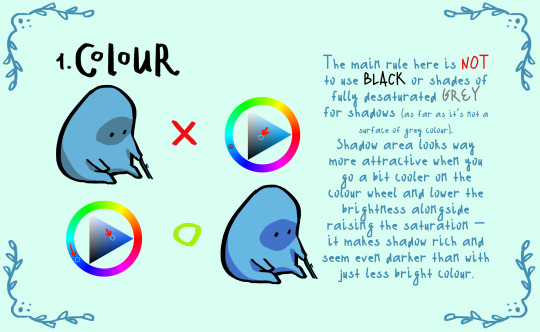






here comes small shading…tutorial? set of advises?? name it whatever you want. hope someone of y’all will find it at least a bit helpful!
special thanks to @cozy-capybara for literally inspiring me to make this thing
25K notes
·
View notes